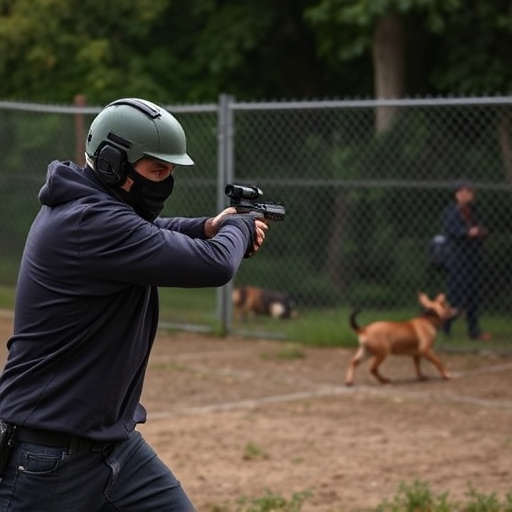When choosing non-lethal self-defense weapons like stun guns or tasers for seniors, consider battery life as a key factor. Lithium-ion batteries power these devices, lasting up to 1500 discharges with proper care. Higher voltage settings accelerate battery drain, requiring more frequent recharging. Regular charging, storage between 15°C – 25°C, and avoiding full discharge extend battery lifespan. Maintaining these non-lethal weapons ensures reliability for seniors' safety and peace of mind.
“In today’s world, non-lethal self-defense devices offer seniors a crucial tool for personal safety. However, understanding the battery life expectancy of these devices is essential for peace of mind. This article delves into the factors influencing stun device battery durability, providing insights for seniors and caregivers. We explore how to maximize battery lifespan, ensuring these lifesaving tools remain reliable when needed most. By understanding and maintaining your non-lethal self-defense weapon’s battery health, you can enhance your safety and security.”
- Understanding Battery Life in Non-lethal Self-Defense Devices
- Factors Affecting Battery Durability for Seniors' Safety
- Maintaining and Extending the Lifespan of Your Stun Device Battery
Understanding Battery Life in Non-lethal Self-Defense Devices
Battery life is a critical consideration when choosing non-lethal self-defense devices, especially for seniors looking to protect themselves. These tools, designed to incapacitate or deter attackers without causing permanent harm, often rely on compact and efficient batteries to ensure they’re ready when needed. Understanding the factors that influence battery longevity allows users to make informed decisions, ensuring peace of mind.
Non-lethal self-defense weapons for seniors, such as stun guns or tasers, typically have lithium-ion batteries that can deliver several hundred discharges before requiring replacement. Manufacturers often provide estimates of up to 1500 charges per battery, depending on usage frequency and settings. It’s essential to consider the device’s power mode options, as higher voltage or intensity settings will deplete batteries faster. Regular maintenance, including periodic charging and proper storage, can also extend battery life expectancy.
Factors Affecting Battery Durability for Seniors' Safety
The battery life of a stun device, or non-lethal self-defense weapon designed for seniors’ safety, is influenced by several key factors. First and foremost, the quality of the device’s batteries plays a significant role; high-quality lithium-ion batteries tend to offer longer durations between charges compared to lower-grade alternatives. Additionally, the frequency and intensity of use greatly impact battery life. Regular deployment in real-world scenarios will drain power faster than occasional tests or demonstrations.
Environmental conditions also matter. Extreme temperatures, both hot and cold, can shorten battery life by affecting their chemical reactions and overall performance. Proper storage, including keeping the device charged but not fully discharged for extended periods, can help maximize its operational lifespan. Moreover, maintaining the stun gun in good condition through regular cleaning and minimal physical stress will contribute to preserving its battery longevity, ensuring that seniors have a reliable self-defense tool when they need it most.
Maintaining and Extending the Lifespan of Your Stun Device Battery
Maintaining and Extending the Lifespan of Your Stun Device Battery
Regular care is essential to maximize the battery life expectancy of your non-lethal self-defense weapon, especially for seniors considering these as personal safety tools. Start by keeping the device clean; remove any dust or debris from the exterior and the battery compartment. Preventing moisture ingress is crucial; always store it in a dry place, as water damage can significantly reduce battery life. Avoid extreme temperatures, which can also degrade performance; ideal conditions are between 15°C and 25°C (59°F to 77°F).
Additionally, ensure you charge your stun device regularly, as a dead battery renders it useless when needed. Use the recommended charger for optimal results. Some devices may have advanced batteries with longer lifespans; check specifications for an approximate charging and discharge cycle count. Following these simple maintenance tips will help extend the service life of your non-lethal self-defense weapon’s battery, ensuring it remains a reliable tool for personal safety in your daily routine.
The longevity of a stun device battery is vital for ensuring the safety and peace of mind of those who rely on non-lethal self-defense weapons, especially for seniors. By understanding the factors influencing battery life and implementing proper maintenance practices, users can maximize the lifespan of their devices. Regular care and attention to these batteries are key to keeping them reliable and ready when needed most, providing a robust defense against potential threats in one’s golden years.
